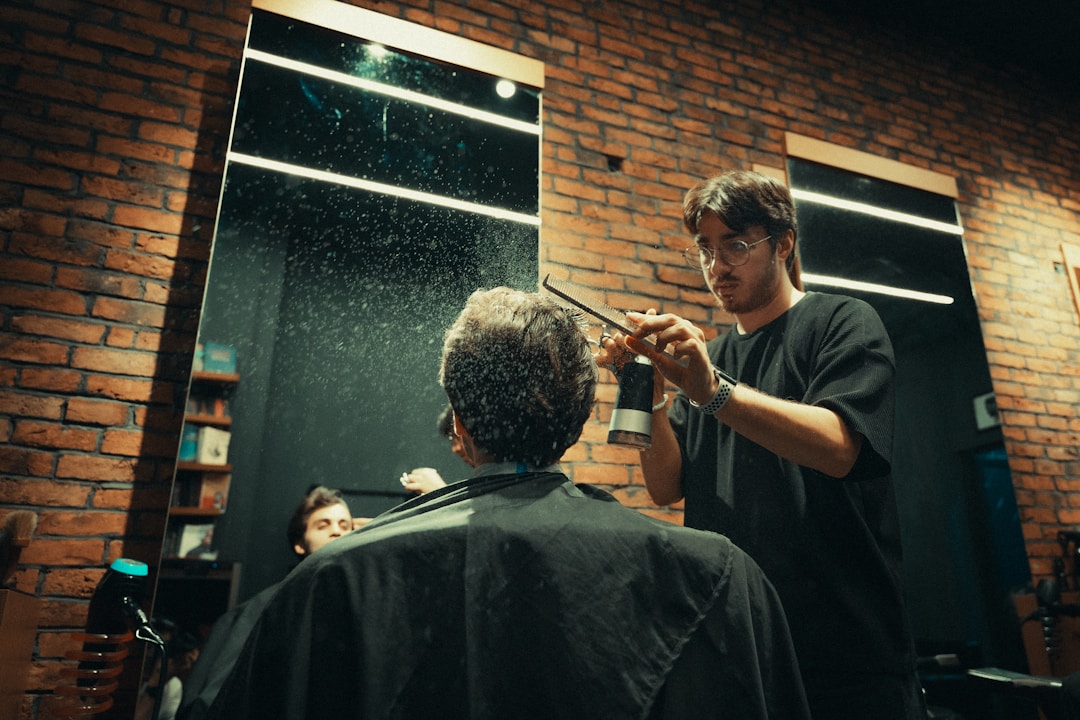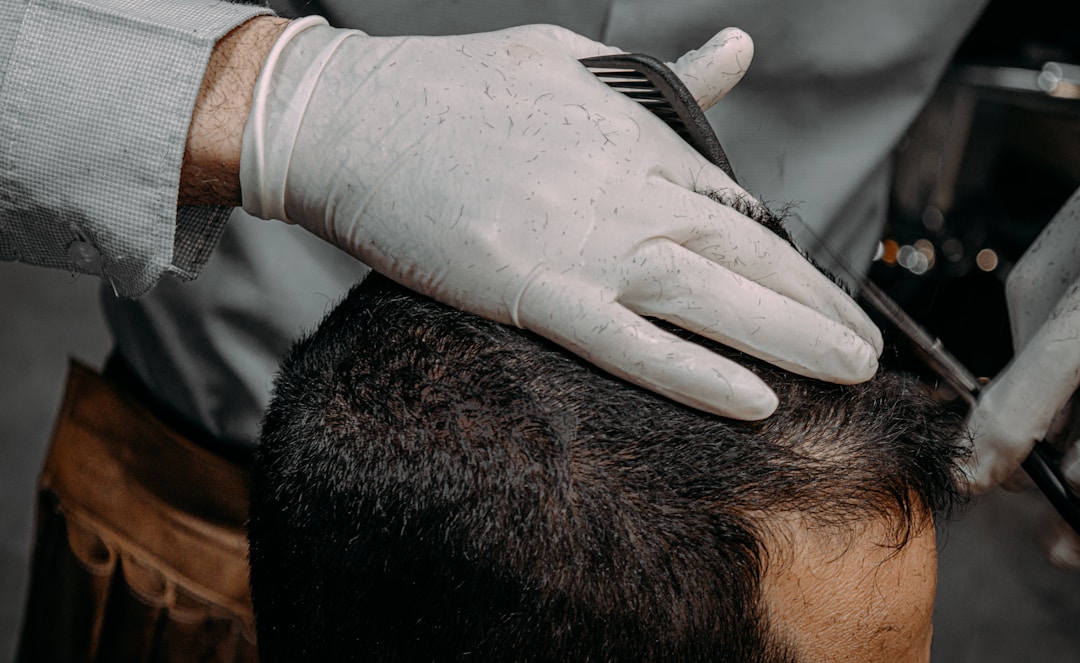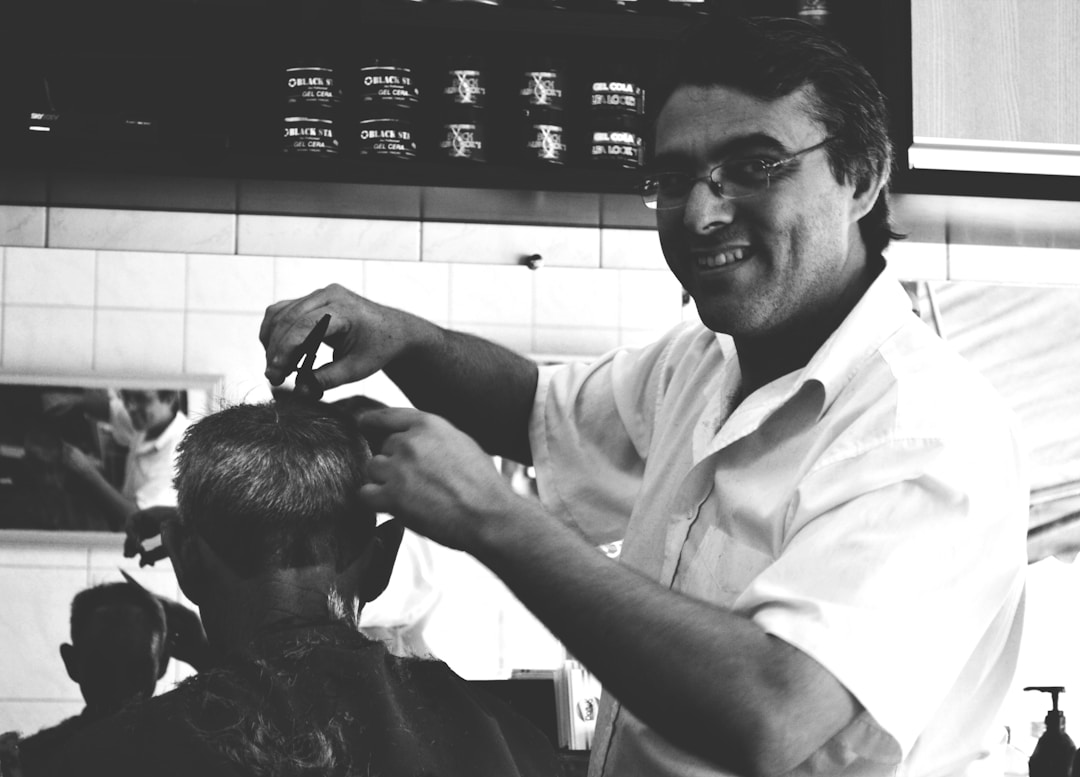
Low Fade Maintenance Cost Schedule 2025
Complete planning guide for weekly, bi-weekly, and monthly low fade maintenance with cost breakdowns, DIY strategies, and long-term budgeting
Understanding the true cost of maintaining a low fade haircut requires complete schedule planning. Beyond the initial cut, your maintenance frequency dramatically impacts annual costs, time investment, and overall appearance quality.
This complete maintenance cost schedule breaks down weekly, bi-weekly, and monthly approaches with real Queens NYC pricing. Whether you prefer professional-only maintenance, DIY touch-ups, or hybrid strategies, you'll discover the optimal schedule for your budget and lifestyle.
At DIDA NYC Hair Studio, we help clients develop sustainable maintenance schedules that balance cost, convenience, and consistent quality,ensuring your low fade always looks sharp without breaking your budget.
Maintenance Frequency Options: Finding Your Ideal Schedule
Weekly Maintenance
Every 7 days for ultra-sharp, magazine-ready fades that never show growth
Best For: Business professionals, performers, perfectionists
Frequency: 52 cuts per year
Annual Cost: $2,340 (52 × $45)
Time Investment: 26 hours annually
Bi-Weekly Maintenance
Every 14 days for fresh fades with optimal cost-quality balance
Best For: Most men seeking consistent quality
Frequency: 26 cuts per year
Annual Cost: $1,170 (26 × $45)
Time Investment: 13 hours annually
Monthly Maintenance
Every 28-30 days for relaxed, grown-out fade with minimal upkeep
Best For: Budget-conscious, casual style preference
Frequency: 12 cuts per year
Annual Cost: $540 (12 × $45)
Time Investment: 6 hours annually
Schedule Selection Factors
- • Hair Growth Rate: Fast growers (1/2" monthly) need more frequent cuts; slow growers (1/4" monthly) can extend intervals
- • Professional Requirements: Corporate environments often demand bi-weekly or weekly sharpness
- • Budget Reality: Weekly maintenance costs 4.3× more than monthly ($2,340 vs $540 annually)
- • Personal Standards: Some men feel unkempt after 10 days; others comfortable for 3-4 weeks
- • DIY Capability: Home touch-ups allow extending professional visit intervals by 7-10 days
Professional vs DIY Maintenance: Complete Cost Analysis

Professional-Only Maintenance Costs
Relying exclusively on professional barbers ensures consistent quality but maximizes annual expenses. Here's the complete breakdown:
Weekly Schedule: $45/cut × 52 visits = $2,340/year + $468 tips (20%) = $2,808 total annual cost
Bi-Weekly Schedule: $45/cut × 26 visits = $1,170/year + $234 tips (20%) = $1,404 total annual cost
Monthly Schedule: $45/cut × 12 visits = $540/year + $108 tips (20%) = $648 total annual cost
Additional costs: Transportation ($5-15/visit), time investment (30-60 min per visit including travel), scheduling constraints, waiting time variability
DIY-Only Maintenance Costs
Complete home maintenance requires initial investment but drastically reduces ongoing costs,though quality often suffers without professional experience:
Initial Investment (Year 1):
- • Quality clippers with guards: $80-150
- • Edge-up trimmer: $30-60
- • Hand mirror (back viewing): $15-25
- • Cape/towels: $15-30
- • Clipper oil/maintenance: $10-20
- Total initial: $150-285
Ongoing Annual Costs:
- • Styling products: $15-30/month × 12 = $180-360/year
- • Blade replacement: $20-40/year
- • Maintenance supplies: $30-50/year
- • Corrective professional cuts (1-2/year): $45-90/year
- Total ongoing: $275-540/year
Reality check: Most DIY-only attempts result in 2-4 corrective professional visits annually ($90-180) due to mistakes, uneven blending, or poor fade execution. True first-year cost: $515-825. Ongoing years: $365-630.
Hybrid Maintenance: The Optimal Strategy
Professional cuts every 3-4 weeks combined with weekly home touch-ups delivers the best cost-quality balance,professional experience where it matters, DIY convenience between visits:
Professional Visits: Every 3 weeks = 17 cuts/year × $45 = $765 + $153 tips = $918/year
Home Touch-Ups: Weekly edge-ups, neck cleanup between professional visits
DIY Tools (Year 1): $150-285 initial investment
Ongoing Products: $180-300/year (less product needed with professional base cuts)
Total Year 1: $1,248-1,503 | Ongoing Years: $1,098-1,218
Savings vs weekly professional: $1,305-1,590/year (47-56% reduction)
Quality vs DIY-only: Professional fade foundation maintains superior blending and shape
Seasonal Maintenance Planning: Year-Round Cost Optimization
Summer Maintenance (June-August)
Higher temperatures accelerate hair growth and increase maintenance needs:
- • Frequency Increase: Bi-weekly schedules often compress to every 10-12 days (30-35 cuts vs standard 26)
- • Cost Impact: Additional 4-9 cuts = $180-405 summer premium
- • Growth Factors: Heat accelerates follicle activity, sun exposure emphasizes imperfections, sweat makes unkempt fades more noticeable
- • Product Usage: 30-50% increase in styling product consumption ($6-15/month extra)
- • Strategy: Schedule morning appointments before heat peaks, invest in sweat-resistant products, consider slightly shorter base cuts to extend sharpness
Fall/Spring Maintenance (March-May, September-November)
Moderate temperatures support standard maintenance schedules:
- • Frequency: Standard bi-weekly (every 14 days) or monthly (every 28-30 days) schedules work perfectly
- • Cost Stability: Baseline maintenance costs without seasonal premiums
- • Optimal Planning: Ideal seasons to establish new maintenance routines and test different frequencies
- • Product Needs: Standard usage without weather-related increases
Winter Maintenance (December-February)
Cold weather slows growth and hats provide cover,potential cost savings:
- • Frequency Extension: Bi-weekly schedules can stretch to every 16-18 days (20-23 cuts vs standard 26)
- • Cost Savings: 3-6 fewer cuts = $135-270 winter savings
- • Hat Coverage: Beanies and winter hats conceal minor imperfections between cuts
- • Indoor Environments: Heating may dry scalp,invest in moisturizing products ($10-15/month)
- • Caution: Don't extend too long; emerging from hat in professional setting requires sharp appearance
Year-Round Consistency Strategy
Despite seasonal variations, maintaining consistent schedule often proves most cost-effective:
- • Budget Predictability: Fixed monthly costs eliminate seasonal spikes and shortfalls
- • Barber Relationship: Regular appointments build rapport, often resulting in priority booking and occasional discounts
- • Quality Consistency: Your barber learns your hair patterns, delivering superior results through familiarity
- • Time Efficiency: Scheduled appointments prevent last-minute scrambling when growth exceeds comfort
- Recommended: Choose bi-weekly or every-18-days schedule year-round rather than variable seasonal adjustments
Long-Term Budget Planning: 5-Year Cost Projections

Understanding multi-year maintenance costs helps evaluate the true investment in your appearance and compare value across different strategies. Here are realistic 5-year projections accounting for price inflation (3% annually) and tool replacement cycles:
Weekly Professional Maintenance
Year 1: $2,808
Year 2: $2,892 (+3%)
Year 3: $2,979 (+3%)
Year 4: $3,068 (+3%)
Year 5: $3,160 (+3%)
5-Year Total: $14,907
Premium quality, zero DIY effort, maximum time investment
Bi-Weekly Professional Maintenance
Year 1: $1,404
Year 2: $1,446 (+3%)
Year 3: $1,489 (+3%)
Year 4: $1,534 (+3%)
Year 5: $1,580 (+3%)
5-Year Total: $7,453
Excellent quality-cost balance for most men
Hybrid Maintenance (Recommended)
Year 1: $1,503 (includes tool investment)
Year 2: $1,154 (+3% on services)
Year 3: $1,340 (+3%, clipper replacement)
Year 4: $1,221 (+3%)
Year 5: $1,258 (+3%)
5-Year Total: $6,476
Best value: professional quality with DIY convenience, saves $977 vs bi-weekly professional
Monthly Professional Maintenance
Year 1: $648
Year 2: $667 (+3%)
Year 3: $687 (+3%)
Year 4: $708 (+3%)
Year 5: $729 (+3%)
5-Year Total: $3,439
Lowest cost, but fade shows growth 50-70% of time
5-Year ROI Analysis
- • Hybrid vs Weekly Professional: Save $8,431 over 5 years (57% cost reduction) while maintaining 90% of quality
- • Hybrid vs Bi-Weekly Professional: Save $977 over 5 years (13% cost reduction) with comparable quality plus convenience
- • Tool Investment Payback: Initial $150-285 DIY tool investment pays for itself within 3-6 hybrid appointments vs full professional
- • Time Value Consideration: Bi-weekly professional requires 65 hours over 5 years vs 85 hours for hybrid (20-hour difference at ~$30/hour value = $600 professional premium justified for some)
- Verdict: Hybrid maintenance offers best long-term value for quality-conscious men willing to invest 15 minutes weekly in home touch-ups
Product Costs and Tool Investment: Complete Shopping Guide
Essential DIY Tools (One-Time Investment)
Quality Clippers with Guard Set
Investment: $80-150 | Lifespan: 2-3 years with proper maintenance
Look for: Andis, Wahl, or Oster professional models with metal guards, adjustable taper lever, powerful motor (magnetic or rotary), corded or lithium battery. Avoid cheap consumer models,they pull hair and deliver uneven cuts.
Edge-Up Trimmer
Investment: $30-60 | Lifespan: 2-4 years
Look for: T-blade or square-blade design for sharp lines, rechargeable battery, close-cutting capability. Essential for maintaining crisp edges between professional cuts.
Hand Mirror (Viewing Back/Sides)
Investment: $15-25 | Lifespan: Indefinite
Look for: Large size (8-10"), adjustable stand or handle, good magnification, fog-resistant. Critical for checking your own work.
Maintenance Supplies
Investment: $25-50 | Replenishment: Every 6-12 months
Includes: Clipper oil (Wahl or Andis brand), cleaning brush, blade coolant/cleaner, small scissors for detail work, cape or large towel, neck duster brush.
Total Initial Investment: $150-285
Monthly Product Costs (Ongoing)
Styling Products
Monthly Cost: $12-25
Pomade, wax, or clay (depending on top style): $8-15/month. Edge control for line maintenance: $4-10/month. Choose water-based products for easy washing and non-greasy finish.
Scalp and Hair Health
Monthly Cost: $8-15
Moisturizing oil or leave-in conditioner for faded areas: $5-10/month. Quality shampoo/conditioner for top section: $3-5/month (high-quality products last longer, worth the investment).
Maintenance Supplies Replenishment
Monthly Cost: $3-8
Clipper oil: $2-4/month. Cleaning supplies (blade wash, brushes): $1-4/month. These small costs add up but are essential for tool longevity.
Total Monthly Ongoing: $23-48 ($276-576 annually)
Smart Shopping Strategies
- • Buy Quality Tools Once: $150 professional clippers last 2-3 years vs $40 consumer clippers needing replacement every 6-9 months,quality saves money long-term
- • Bulk Purchase Styling Products: Buy 3-4 month supply during sales (20-30% savings), especially Black Friday, Amazon Prime Day, or barbershop supply sales
- • Professional Supply Stores: Sally Beauty, barber supply wholesalers offer 15-25% lower prices than retail for identical products
- • Subscription Services: Some brands offer 10-15% discounts for auto-ship subscriptions,works well for regular-use products
- • Ask Your Barber: Many barbers sell products at or near wholesale prices to regular clients,builds relationship and ensures you're getting what they actually use
Maintenance Cost Reduction Strategies: Maximize Value
Schedule Optimization
- • Extend cuts from 14 to 18 days saves 8 cuts annually ($360-432 with tips)
- • Strategic scheduling before important events maximizes freshness when it matters
- • Off-peak appointments (weekday mornings) sometimes offer discounts at participating shops
- • Consistent schedule builds barber loyalty,may earn occasional free edge-ups or discounts
DIY Skill Development
- • Master basic edge-ups (neck, sideburns) extends professional cut life by 30-50%
- • Learn proper clipper maintenance extends tool life by 40-60%
- • YouTube tutorials and barber instructionals provide free education (invest time, save money)
- • Start with simple touch-ups; expand skills gradually to avoid costly mistakes
Product Economics
- • Professional-grade products cost more upfront but last longer (better cost per use)
- • Using correct amount (pea-sized pomade vs tablespoon) extends product 3-4× longer
- • Multi-purpose products (pomade that works for styling and edge control) reduce total purchases
- • Buy what your barber uses,they've tested extensively and select for performance-to-cost ratio
Strategic Timing
- • Get professional cuts before multi-week vacations or low-visibility periods
- • Slightly longer intervals during winter (hat season) when precision matters less
- • Coordinate cuts around major events (weddings, presentations) rather than fixed calendar schedule
- • Some barbershops offer package deals (buy 10 cuts, get 11th free) for prepayment savings
Warning: False Economies to Avoid
- ✗ Cheap Clippers: $30 consumer clippers pull hair, deliver uneven results, break quickly,costs more in frustration and corrective cuts than buying quality initially
- ✗ Extending Too Long: Cutting every 6-8 weeks to "save money" results in starting over each time rather than maintenance,actually costs more per year
- ✗ DIY Complex Work: Attempting full fades at home without training leads to $45-75 corrective cuts plus emotional cost of ruined haircuts before important events
- ✗ Bottom-Tier Barbers: $20 "bargain" cuts requiring $45 corrections every 2-3 visits cost more than $45 quality cuts from the start
- ✓ Smart Approach: Invest in quality tools and barbers, learn appropriate DIY skills, maintain consistent schedule,total cost is lowest when quality is highest
Frequently Asked Questions
Ready to Optimize Your Low Fade Maintenance Schedule?
Visit DIDA NYC Hair Studio in Queens for expert low fade haircuts and personalized maintenance planning. Our barbers help you develop sustainable schedules that balance cost, convenience, and consistent quality.